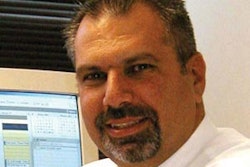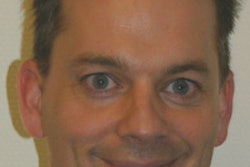
Bigger is not always necessarily better, but in the case of one of Safeway Inc.’s distribution centers, the biggest is the best.
Safeway is the fifth largest food retailer in North America. The company operates 1,739 stores in the United States and western Canada and posted annual sales of $44.1 billion in 2008. The retailer has 12 retail operating areas each served by a regional distribution center. In all, Safeway has 17 distribution centers (13 in the U.S. and four in Canada) that provide the majority of all products to all of its stores.
The Tracy, CA, facility is the company’s largest DC—in fact, it’s one of the largest distribution centers on the West Coast. The DC services 271 stores in California and Nevada, as well as 19 locations in Hawaii—shipping some 14 million cases each 28-day cycle.
For its outstanding success at handling such a huge volume—with a 99.9 percent accuracy rate—Safeway’s NorCal division has received Food Logistics’ Golden Pallet award in the self-distributing retailer category.
The Golden Pallet Awards, sponsored by Food Logistics and CHEP USA, are the first industry awards to recognize excellence in warehousing. Two more winners will be profiled in upcoming issues of FL.
“The distribution center is 2.2 million square feet,” says Jack Mixey, the director of distribution of NorCal. “It’s like a small city.”
Mixey, a 25-year industry veteran, joined Safeway about 18 months ago. But he’s no stranger to the company—he started his career with the retailer in its Phoenix division in 1982. He’s also worked for U.S. Foodservice and CoreMark, so he brings a well-rounded perspective to his current position.
Mixey oversees the huge distribution center. Under one roof, there’s a produce warehouse (464,000 square feet), meat/seafood warehouse (100,000 square feet) and a frozen warehouse (253,000 square feet). Then there’s a dry grocery warehouse (678,000 square feet) and a general merchandise warehouse (390,000 square feet). There’s also a recycling center and a truck repair shop, as well as an administration building.
The facility, which operates two shifts, has 1,650 employees, including 200 part-time. Mixey attributes a number of factors to its impressive throughput—the adoption of lean operating principles, technology and, most importantly, the employees.
“This is a world-class facility and we have an excellent group of employees,” says Mixey. “Everything here has to be well orchestrated and on time and our employees understand that.”
NorCal is using an EXE warehouse management system to run its operations (EXE is now part of Atlanta-based Infor). The WMS integrates inventory data at the distribution center with store inventories in real-time. “Store orders are downloaded into our order management system, which in turn are routed through Manugistics (now part of Phoenix-based JDA Software) and the routes are uploaded into the WMS and CAMS Software,” says Mixey.
The company is using CAMS, a Canadian supplier of transportation management solutions, for setting up backhauls and its activity-based driver payroll system.
CONTINUAL IMPROVEMENTS
NorCal has adopted the 5S lean distribution principles, which has enabled it to efficiently handle the huge volume and complexity of its orders. These principles aim to reduce waste and optimize productivity through maintaining an orderly workplace and using visual cues to achieve more consistent operational results. This method “cleans up” and organizes the workplace in its existing configuration.
“It’s about sustaining our facility in a like-new condition,” says Mixey. “This distribution center was built in 1992 and it was beginning to show its age, so a few years ago we began to operate under the 5S philosophy and we continually improve its appearance and upkeep.”
The five pillars of the principle are:
Sort: Distinguish between what is need and not needed;
Set in Order: Have a place for everything and everything in its place;
Shine: Clean and look for ways to keep things clean and organized;
Standardize: Maintain and monitor the first three categories;
Sustain: Stick to the 5S rules and audit your results.
In the daily work of a company, routines that maintain organization and orderliness are essential to a smooth and efficient flow of activities. This lean method encourages employees to improve their working conditions and helps them to reduce waste and unplanned down time.
Having a well-maintained facility can also prevent accidents and NorCal has greatly reduced its injury frequency rate (IFR) in recent years. “We measure our IFR by how many injuries per 200,000 hours,” says Mixey. “In 2003, our IFR was at a 13.0 IFR and in 2008 we finished at 7.4 IFR, and our goal for this year is 6.0. So it’s consistently improved—and improved dramatically.”
Mixey attributes this success to continually raising the level of safety awareness among employees. “We believe in recognizing safety and each facility has a separate safety program. The programs are essentially all the same, but they’re tailored to each specific warehouse. Our employees earn points for not getting injured and when they earn enough points they get a Safeway gift card. We also have a barbecue for any department that goes injury free for 30 days. We’ve had departments that have gone more than 200 days without any accidents,” he says.
Recognizing employees for their safety records improves morale, as does giving them a chance to shine. NorCal has developed a task force comprised of high potential supervisors to identify areas of opportunity to improve operations and reduce costs. Not only do the employees help solve real problems, but they get to hone their management skills.
“We’re building our bench strength here,” says Mixey. “One area that the task force worked on was product damage at the store. It was delaying the drivers. The task force went through the process and identified certain issues, such as poor shrink wrapping and pallets that were not properly loaded, and fixed those problems over the course of a year. There’s been an almost 20 percent reduction in driver delays.”
NorCal continually seeks operational improvement. For example, the distribution center recently incorporated a flow aisle in its grocery warehouse which took almost 1,000 slow-moving items out of various selection paths and located them down one aisle. “By doing this, we removed about three quarters of a mile of travel in the warehouse,” says Mixey. “Considering we’ve got anywhere from 80 to 100 selectors working each day, you can imagine the amount of time we’re saving.”
KEEPING IT GREEN
Sustainability is very important to Safeway. The company is one of the largest retail purchasers of wind energy, using 57 million kilowatt hours of wind energy, enough to power all 303 Safeway retail fuel stations, all stores in San Francisco, California and Boulder, CO, as well as all of the company headquarters and all corporate offices in Northern California.
That commitment to the environment extends into its distribution and manufacturing operations as well. For example, at its distribution centers, Safeway uses ammonia as a refrigerant, which does not contribute to ozone depletion or global warming.
NorCal has its own recycling center right on its premises. “When our trailers come back with store returns, they go to the recycling center first and from that point we off-load and recycle cardboard bails and plastic bags,” says Mixey. “Everything goes through our recycle center and in doing so, we’ve been able to eliminate tons of waste. We even separate our bread products from our bakery shrink and sell that to local farmers to feed their hogs.”
The company has been a member of the EPA’s Transport Partnership since 2006. The alliance is committed to adopting fuel-saving and air-pollution strategies which reduce fuel costs and decrease greenhouse gas emissions—which is extremely important to NorCal considering its fleet runs about 25 million miles per year.
“We’re constantly updating our fleet with more fuel efficient and environmentally-friendly equipment,” says Mixey. “We cover a large geographic area with our average distance per load at 205 miles and we have some stores that are 600 miles from the DC. But the bulk of our store concentration is in Oakland and San Francisco, so we have a lot of city deliveries.”
Urban delivery presents some challenges for the company. “We have more stores with restricted delivery than any other Safeway DC because we service the Bay area and they prefer not having trucks running around in the middle of the night,” says Mixey.
“We can’t deliver between 7 p.m. to 6 a.m. to about 100 of our stores. Plus, it’s not easy navigating a 50-foot trailer down the streets of San Francisco—and still have 99 percent on time delivery, but we manage it.”
NorCal owns its own fleet, which runs 24 hours a day seven days a week, and has 412 drivers. Its fleet consists of 210 tractors, 784 trailers and 16 yard tractors.
The company is using Eden Prairie, MN-based XATA’s onboard system on all of its trucks. “We’re using cellular and GPS,” says Mixey. “It allows us two-way communication and a host of reporting and monitoring capabilities.”
NorCal also serves as Safeway’s beta site, where it tests various initiatives before rolling them out to other DCs. “A lot of companies would use their smallest facility to do beta testing on certain things, but we’re usually the test site because we’re the largest and close to our headquarters in Pleasanton,” says Mixey.
Right now, the company is currently testing proximity reporting with the XATA system. “This allows us to send a message to the store and let them know that the truck will be there in 30 minutes,” says Mixey. “This is more efficient for the driver in unloading and for the stores as well, so their backroom is prepared and ready for the loads. Eventually, it will enable the stores to schedule their employees properly.”
The company is also testing air skirts on five of its trailers. “We’re looking at them not only in terms of how they affect our miles per gallon, but just how applicable they are to us without segregating our fleet,” says Mixey. “We would want to use them both in town and out-of-town, but some of the streets out here have very steep inclines and we want to make sure we won’t have any problems with that.”
In addition, NorCal is investing engine alternatives for its reefer unit engines. “Last year, we had to replace 180 reefer unit engines because they didn’t meet CARB (California Air Resource Board) requirements and this year we had to replace another 90 engines and it’s constantly getting tougher,” says Mixey.
Looking forward, Mixey says that NorCal will continue to look for better ways to serve its employees, like making the work environment more enjoyable. “We have three soccer fields for our employees, horse shoe pits and basketball and handball courts,” says Mixey. “They don’t have a lot of down time, but when they do, it gives them a chance to relax.”
He adds the company will also look for ways to improve customer service.
“In self distribution, you’re always looking to reduce costs because we are a cost center,” says Mixey. “But our customers—our stores—understand that and they look to help us because they know they’ll benefit from that. They’re receptive to changes in order to reduce costs and it makes the job much easier for us. Everybody is in this together.”


















